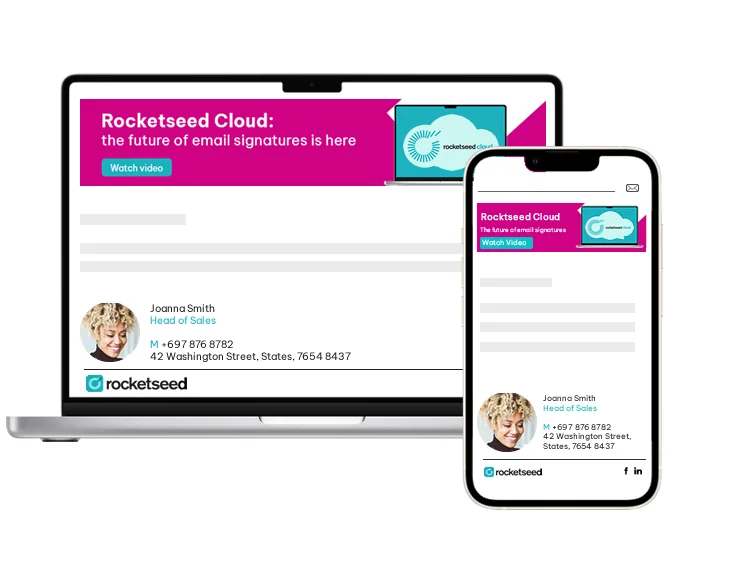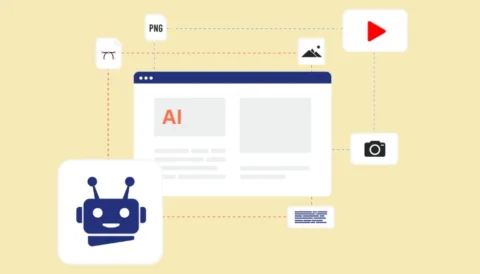By Michael Hutt
ROI, CPC, CPM, CTR, CTA, PPC, AEV, NPS…
Welcome to Marketing in the modern day, when everything can be boiled down to a TLA (Three Letter Acronym). Reporting on marketing activity has somewhat become marketing.
Marketing should be a blend of creativity, connection, and measurable impact. The modern marketer should not lose sight of the core principles that make marketing a powerful tool: the ability to tell a compelling story, to engage and inspire, and to build a lasting relationship with the customer. This would often be termed ‘brand-led’ marketing.
Brand-led Approach vs. Acquisition-led Marketing Approach
However, the idea of a brand-led approach to marketing is almost going by the wayside. In an era dominated by data-driven strategies and performance metrics, the focus has shifted from cultivating a strong, cohesive brand identity to prioritizing immediate, quantifiable results. This shift often leads to marketing efforts that are more transactional and less about building a lasting emotional connection with the audience. As brands chase after short-term gains and measurable KPIs, the essence of brand storytelling and the creation of unique, memorable experiences can get lost. The result is a landscape cluttered with homogeneous campaigns that may deliver numbers but fail to inspire genuine loyalty and engagement. To truly stand out, brands must find a balance, leveraging data to enhance their creative storytelling while staying true to their core values and vision.
Just look at the recent analysis of Nike’s shift from brand-led marketing to acquisition-led marketing to see the damage this can potentially do to a business. What it equated to was a lack of creativity and customer (especially new customer) engagement, and therefore, what was driving digital acquisition became insignificant to the people receiving the ads. This resulted in Nike deciding to discount for the first time, which was rather a change of tactic for them.
Marketing Measurement isn’t the Holy Grail
No one can deny that things need to be measured, but measuring shouldn’t be the end goal. Marketing should surprise and delight people and give them a reason to be interested in whatever you sell, not only that: but share. By all accounts, one-to-one marketing has been the most valuable form of marketing we’ve ever seen and probably will ever see, yet most people overlook it and focus solely on one-to-many. But what about one-to-one with scale? Everyone is looking for the elusive ‘personalization’ element, but other than a face-to-face conversation (which, let’s face it, hasn’t been the main driver of business since people started making outbound phone calls in the 1950s). A phone call is still great, but it’s time-intensive and a learned skill.
The heart of one-to-one marketing is its ability to create memorable and meaningful experiences. This is where creativity comes into play. A great marketing campaign resonates emotionally, tells a story, and creates a connection. From the first touchpoint with a customer, potential customer, or partner, marketing needs to create emotional engagement that creates something special enough to drive action. Integrating the QR code generator can enhance this experience by providing instant access to exclusive content, promotions, or interactive storytelling elements. While data can inform and guide creative decisions, it should not dictate them. The most successful campaigns are those that balance data-driven insights and creative innovation.

Personalization is a critical element of modern marketing, yet achieving it at scale is challenging. Consumers today expect more than just generic messages; they seek relevant and personalized interactions. Technology, such as AI and machine learning, can potentially deliver personalized experiences at scale. However, true personalization goes beyond algorithms. It requires a deep understanding of the customer, a human touch, and a commitment to delivering value.
Moreover, the importance of building relationships cannot be overstated. Building a loyal customer base requires more than just transactions in a world where people are bombarded with messages. It requires engagement, trust, and authenticity. Brands prioritizing relationship-building over short-term gains are more likely to see sustained success.
One-to-one Marketing; Critical for Personalization
Unlike traditional email marketing, one-to-one email leverages personal connections and trust to deliver more impactful and engaging marketing messages. Here are some of the critical values it offers:
Trust in Recommendations: Personal recommendations from trusted sources are highly influential in purchasing decisions. One-to-one email marketing leverages this trust by delivering messages within the context of personal communication.
Authentic Recommendations: The messages in one-to-one emails are perceived as genuine recommendations rather than blatant advertisements, enhancing their impact.
High Engagement: One-to-one emails see significantly higher engagement rates than mass email campaigns, with open rates near 100% and click-through rates as high as 40-50%.
Lead Generation and Sales: Direct campaigns can generate leads and drive sales by reaching customers with targeted and personalized messaging.
Customer Retention and Satisfaction: Personalized communication and easy access to support can improve customer experience, loyalty, and retention.
Increased Brand Awareness: Consistent branding in every email communication helps reinforce brand visibility and recognition.
And yes, measurement is still important, but it isn’t the primary goal. Unlike traditional word-of-mouth, one-to-one email marketing allows tracking metrics like click-through rates and ROI to measure campaign effectiveness while keeping the story front and center.
So, isn’t the real challenge for modern marketers to prioritize one-to-one storytelling that captivates and converts rather than just chasing metrics?



